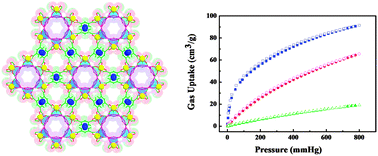 Natalie Stingelin is a Reader at the Department of Materials, Imperial College London, UK, where she conducts research in the broad area of organic functional materials, including organic electronics, multifunctional inorganic/organic hybrids and smart, advanced optical systems based on organic matter. She has more than 70 papers, is an Associate Editor of Journal of Materials Chemistry C, and in 2011 she received an ERC Young Investigator Award.
Natalie Stingelin is a Reader at the Department of Materials, Imperial College London, UK, where she conducts research in the broad area of organic functional materials, including organic electronics, multifunctional inorganic/organic hybrids and smart, advanced optical systems based on organic matter. She has more than 70 papers, is an Associate Editor of Journal of Materials Chemistry C, and in 2011 she received an ERC Young Investigator Award.
Her recent papers include:
Synthesis and charge transport studies of stable, soluble hexacenes
Balaji Purushothaman, Sean R. Parkin, Mark J. Kendrick, Daniel David, Jeremy W. Ward, Liyang Yu, Natalie Stingelin, Oana D. Jurchescu, Oksana Ostroverkhova and John E. Anthony
Chem. Commun., 2012, 48, 8261-8263
Solution-processed small molecule transistors with low operating voltages and high grain-boundary anisotropy
Liyang Yu, Xiaoran Li, Jeremy Smith, Steven Tierney, Richard Sweeney, B. K. Charlotte Kjellander, Gerwin H. Gelinck, Thomas D. Anthopoulos and Natalie Stingelin
J. Mater. Chem., 2012, 22, 9458-9461
A flexible n-type organic semiconductor for optoelectronics
Ke Gui, Karyn Mutkins, Paul E. Schwenn, Karsten B. Krueger, Almantas Pivrikas, Pascal Wolfer, Natalie Stingelin Stutzmann, Paul L. Burn and Paul Meredith
J. Mater. Chem., 2012, 22, 1800-1806
Fullerene crystallisation as a key driver of charge separation in polymer/fullerene bulk heterojunction solar cells
Fiona C. Jamieson, Ester Buchaca Domingo, Thomas McCarthy-Ward, Martin Heeney, Natalie Stingelin and James R. Durrant
Chem. Sci., 2012, 3, 485-492
A low band gap co-polymer of dithienogermole and 2,1,3-benzothiadiazole by Suzuki polycondensation and its application in transistor and photovoltaic cells
Zhuping Fei, Jong Soo Kim, Jeremy Smith, Ester Buchaca Domingo, Thomas D. Anthopoulos, Natalie Stingelin, Scott E. Watkins, Ji-Seon Kim and Martin Heeney
J. Mater. Chem., 2011, 21, 16257-16263
Low band gap selenophene–diketopyrrolopyrrole polymers exhibiting high and balanced ambipolar performance in bottom-gate transistors
Munazza Shahid, Thomas McCarthy-Ward, John Labram, Stephan Rossbauer, Ester Buchaca Domingo, Scott E. Watkins, Natalie Stingelin, Thomas D. Anthopoulos and Martin Heeney
Chem. Sci., 2012, 3, 181-185
Follow the latest journal news on Twitter @JMaterChem or go to our Facebook page.
Comments Off on Introducing Journal of Materials Chemistry C Associate Editor Natalie Stingelin
 This Feature Article by Jose Manuel Valverde from the University of Seville, reviews Ca-based adsorbents for post-combustion carbon capture in Ca-looping processes. This process involves the carbonation reaction of CaO to capture CO2, followed by calcination of limestone to regenerate the sorbent. The author discusses several topics, including: strategies for reactivation of natural limestones, Ca-based sorbents from synthetic precursors, the use of nanomaterials, the performance of sorbents under harsh calcination conditions, SO2/CO2 capture efficiency and physical methods to enhance CO2 capture performance.
This Feature Article by Jose Manuel Valverde from the University of Seville, reviews Ca-based adsorbents for post-combustion carbon capture in Ca-looping processes. This process involves the carbonation reaction of CaO to capture CO2, followed by calcination of limestone to regenerate the sorbent. The author discusses several topics, including: strategies for reactivation of natural limestones, Ca-based sorbents from synthetic precursors, the use of nanomaterials, the performance of sorbents under harsh calcination conditions, SO2/CO2 capture efficiency and physical methods to enhance CO2 capture performance.

















